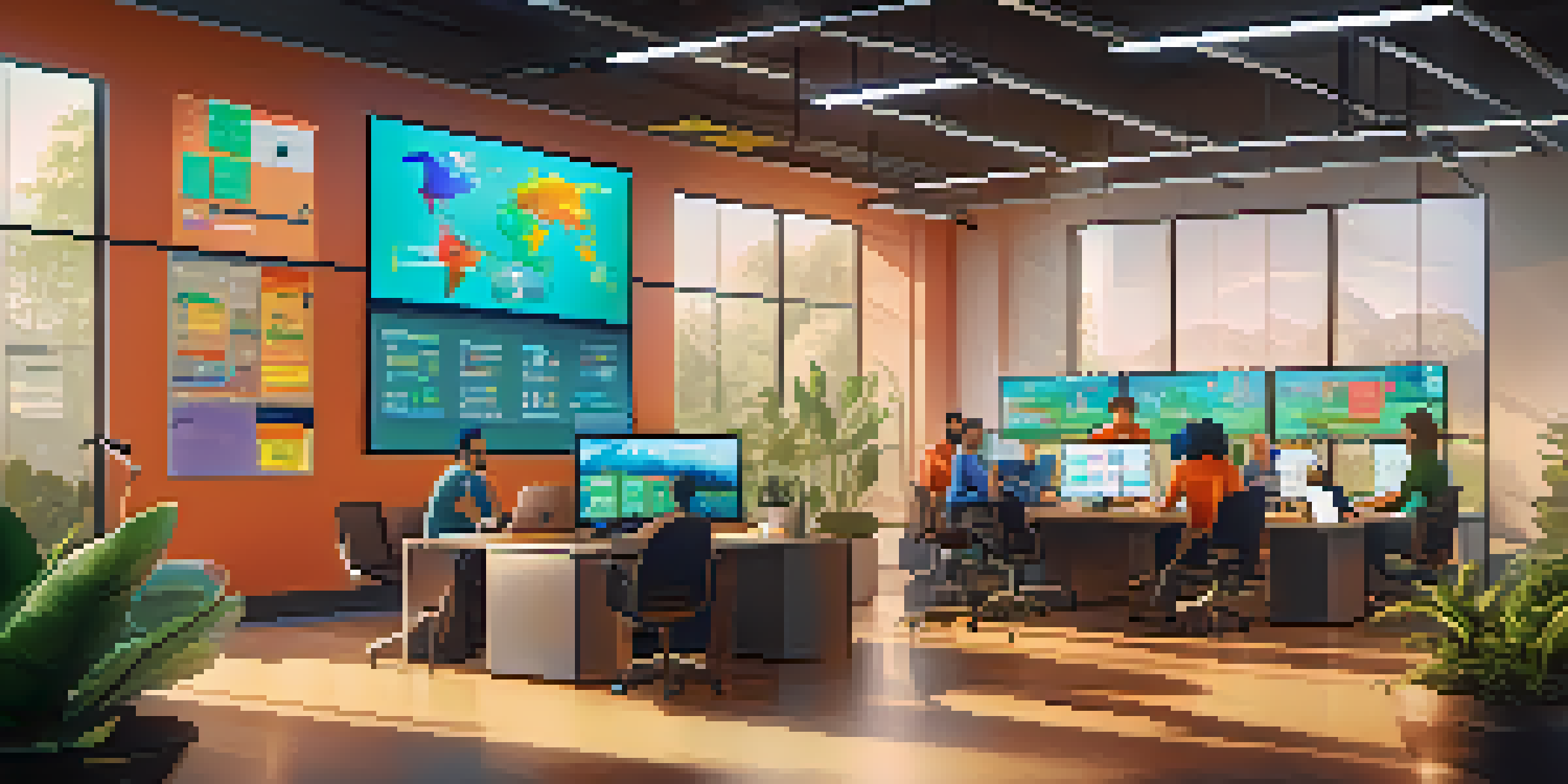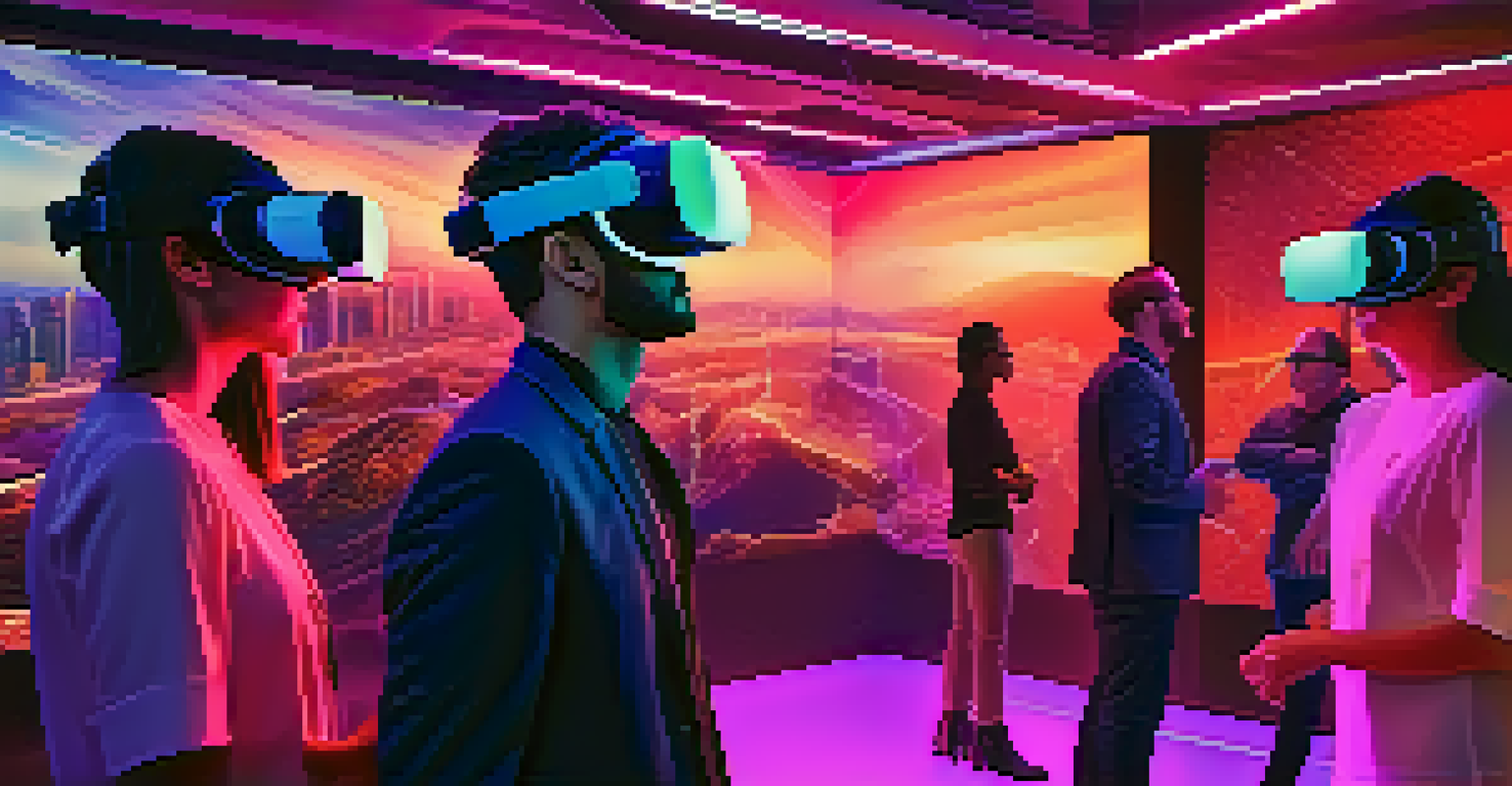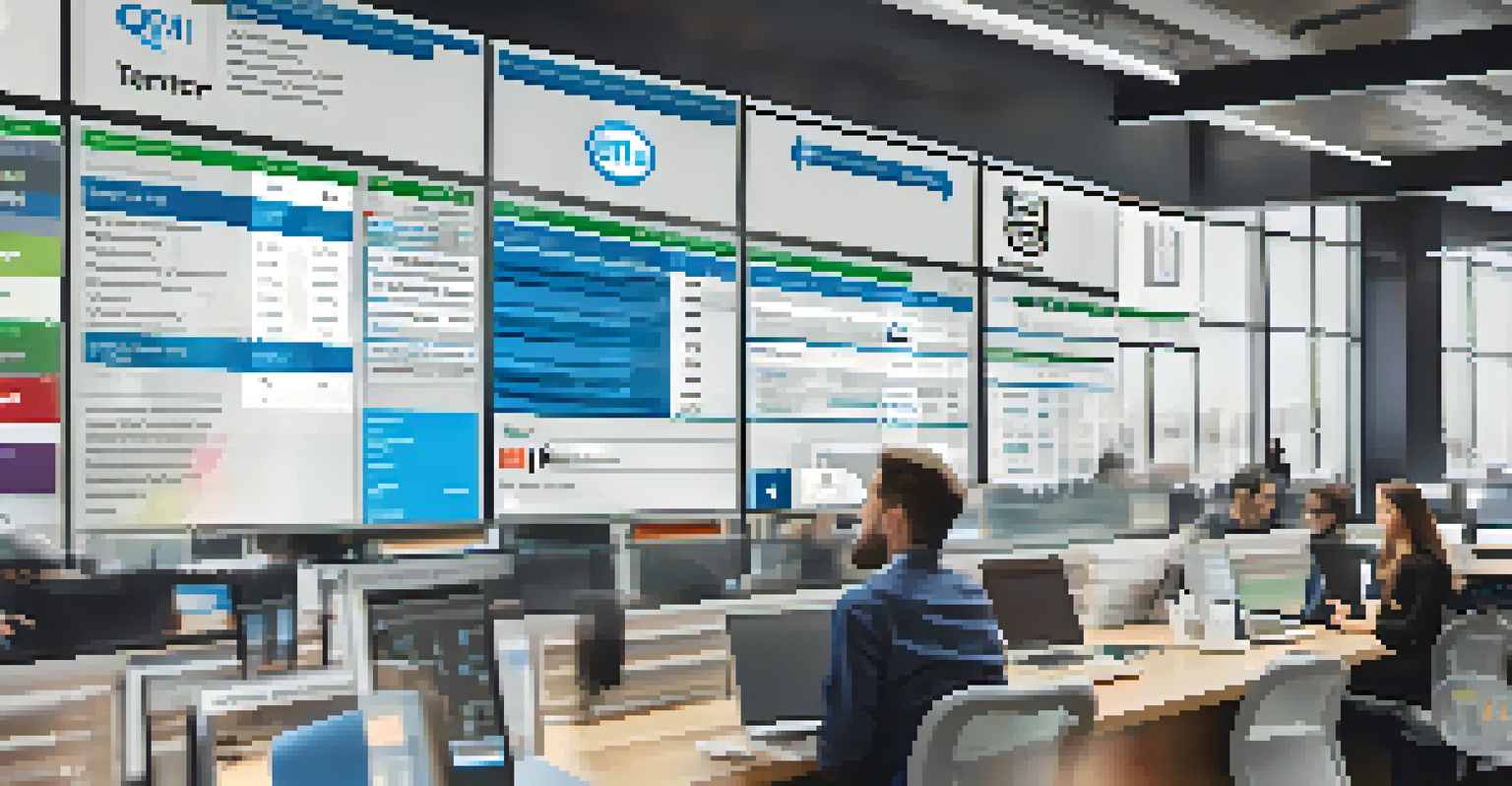Utilizing Gamification to Foster Innovation and Problem-Solving Skills

Understanding Gamification and Its Benefits
Gamification is the process of incorporating game-like elements into non-game contexts. This approach can transform mundane tasks into engaging challenges by adding rewards, competition, or progress tracking. By tapping into our natural desire for achievement and fun, gamification fosters motivation and participation, making it easier to innovate.
Gamification is not just a trend; it’s a powerful tool that can redefine how we approach learning and innovation.
Incorporating gamification into work processes can lead to increased collaboration and creativity. For instance, teams might engage in friendly competitions to solve problems, sparking innovative solutions that wouldn't emerge in traditional settings. The excitement of game mechanics can also help break down barriers, encouraging more open communication among team members.
Ultimately, gamification not only enhances individual motivation but also cultivates an environment where innovation thrives. When employees feel engaged and valued, they are more likely to contribute ideas and take risks in problem-solving, leading to breakthroughs that can propel an organization forward.
How Gamification Enhances Problem-Solving Skills
One of the key benefits of gamification is its ability to enhance problem-solving skills. By presenting challenges in a game format, individuals are encouraged to think critically and creatively. They learn to approach problems from different angles, which is essential in today’s fast-paced business environment.

For example, a company might implement a gamified platform where employees can tackle real-world problems as part of a game. As they navigate these challenges, they develop not only their analytical skills but also their ability to collaborate with others to find solutions. This immersive learning experience can lead to deeper understanding and retention of problem-solving techniques.
Through this process, individuals become more adaptable and resilient, traits that are invaluable in any workplace. They learn to embrace challenges rather than shy away from them, equipping themselves with the skills to tackle not just current issues but future obstacles as well.
Creating Engaging Gamified Experiences
To successfully implement gamification, organizations must create engaging experiences that resonate with employees. This involves understanding what motivates your team—are they driven by competition, collaboration, or personal achievement? Tailoring the gamified elements to these motivations can significantly enhance participation and enjoyment.
The game is afoot! It is time to engage the players and embrace a sense of competition to foster innovation.
For instance, introducing leaderboards can stir a competitive spirit among employees, while collaborative games might foster teamwork. Incorporating elements like badges, points, or rewards can also add an extra layer of excitement and recognition, encouraging employees to strive for improvement and innovation.
Moreover, it's essential to ensure that the challenges presented are relevant and aligned with the organization's goals. When employees see a direct connection between the gamified experience and their work, they are more likely to engage wholeheartedly, leading to meaningful contributions and innovative solutions.
The Role of Feedback in Gamification
Feedback is a crucial component of gamification, as it helps individuals understand their progress and areas for improvement. In a gamified environment, timely and constructive feedback can motivate employees to refine their skills and enhance their problem-solving abilities. It creates a continuous learning loop that is vital for personal and professional growth.
For example, after completing a gamified challenge, participants might receive insights into their performance, along with suggestions for improvement. This not only helps them learn but also reinforces their commitment to the gamified process, as they can see the tangible benefits of their efforts.
Furthermore, regular feedback fosters a culture of openness and communication within teams. Employees feel more comfortable sharing ideas and suggestions, knowing that their contributions are valued and recognized. This collaborative atmosphere is essential for driving innovation and effective problem-solving.
Real-World Examples of Gamification Success
Many organizations have successfully harnessed gamification to drive innovation and problem-solving skills. For instance, companies like Deloitte have used gamified training programs to enhance employee engagement and learning. By turning training sessions into interactive games, they’ve seen significant improvements in retention and application of skills.
Another notable example is the online platform Khan Academy, which gamifies education by offering points and badges for completing lessons. This approach has not only made learning more enjoyable but has also encouraged students to tackle complex subjects with confidence, fostering their problem-solving abilities.
These real-world examples illustrate that gamification is not just a trend; it’s a powerful tool that can redefine how we approach learning and innovation. When implemented thoughtfully, it can yield impressive results that benefit both employees and organizations alike.
Challenges of Implementing Gamification
While gamification offers numerous benefits, it’s not without its challenges. One common issue is ensuring that the gamified elements do not overshadow the actual objectives of the tasks at hand. It’s essential to strike a balance between fun and productivity, so that the focus remains on meaningful outcomes rather than just gameplay.
Additionally, organizations may face resistance from employees who are skeptical about gamification. Some might view it as a gimmick or feel uncomfortable with the competitive aspects. To address this, it’s crucial to communicate the purpose and benefits of gamification clearly, fostering buy-in from all team members.
Lastly, ongoing evaluation and adaptation of the gamified elements are necessary to ensure their continued relevance and effectiveness. Regularly assessing employee feedback and engagement levels can help organizations refine their approach, making gamification a sustainable strategy for fostering innovation and problem-solving.
The Future of Gamification in the Workplace
As technology continues to evolve, the potential for gamification in the workplace is expanding. With advancements in virtual and augmented reality, organizations can create even more immersive gamified experiences that enhance learning and problem-solving. These technologies can transport employees into realistic scenarios where they can practice their skills in a safe and engaging environment.
Moreover, the integration of artificial intelligence can personalize gamification experiences for individual employees. AI can track progress, adapt challenges to skill levels, and provide tailored feedback, making gamification even more effective in fostering innovation and problem-solving skills.

In conclusion, the future of gamification holds great promise for organizations looking to boost engagement and creativity. By embracing these advancements, companies can create dynamic workplaces where innovation thrives, ultimately leading to greater success and adaptability in an ever-changing landscape.